Mazda CX-90 review and buyer's guide
This all-new super-sized luxury 7-seater is Mazda’s foray into the premium SUV segment, which means it’s taking aim at the three established German brands, and Lexus. Can a CX-90 possibly be better than a BMW? Lets find out…
The Mazda CX-90 is that company’s answer to the luxury SUV market dominated by BMW, Mercedes, Audi and Lexus.
Mazda’s efforts here are to be underestimated at the risk of the established players, because not only have they notionally understood the meaning behind ‘if you intend to kill the king, don’t miss’, they’ve also innovated in the process.
In this review you’re going to get an honest appraisal of what is a surprisingly important vehicle, but you’ll also get a healthy dose of balanced criticism, so that you can make an informed choice between buying from an established brand or an upstart.
The interesting part about that is, you probably don’t know which is which in that description - and for good reason. Download the official Mazda CX-90 brochure here >> for more.
Let’s get something very clear from the outset: Mazda has never done a prestige vehicle. Historically, Mazda has made affordable and fairly reliable vehicles that have mass market appeal, are reasonably priced (generally speaking) and they’re usually pretty good on fuel as well.
In the last 10 years they’ve offered plenty of benchmark modern features, arguably the best interiors of the most popular vehicle categories (like medium & large SUVs, medium sized cars - even the BT-50 ute has a pretty plush interior for a ute). Their seats are wonderfully comfortable, easy to configure to your requirements, and just the level of styling effort they put in has been aspirational to other brands. Mazda has often used premium materials where other brands take a more ‘that’ll do’ approach and still charge similar money.
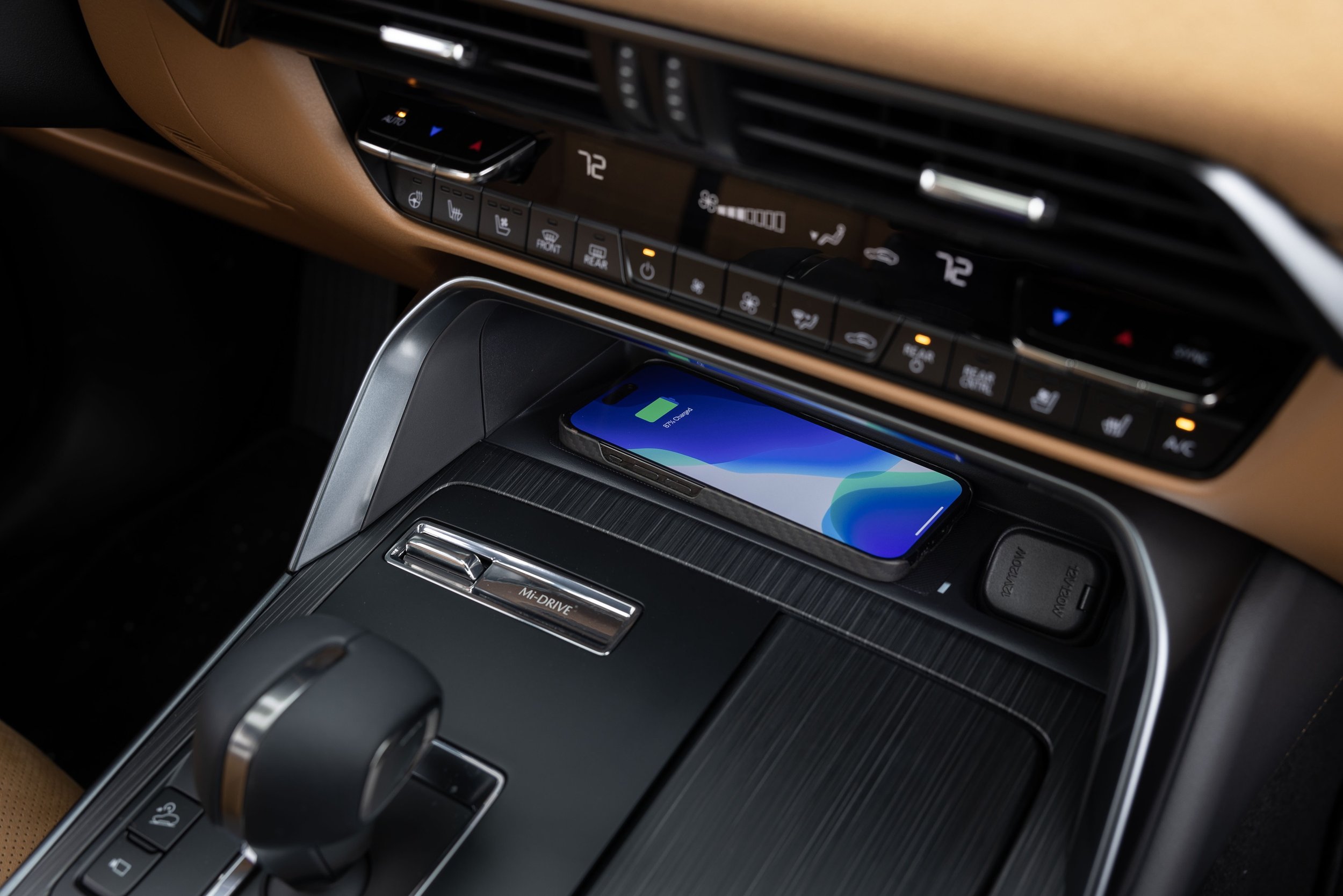

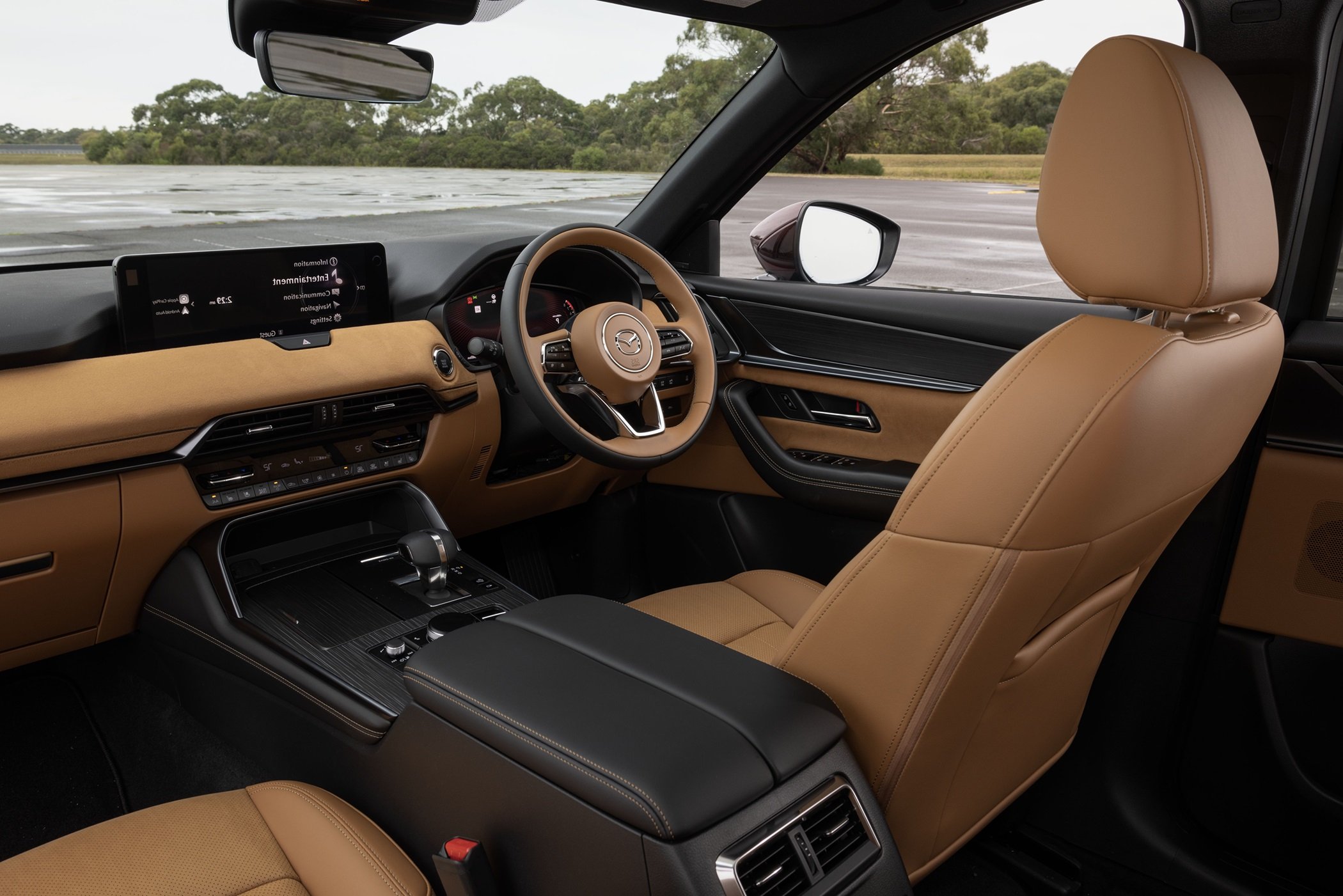
They’ve also made huge strides in engine innovation with the ‘SkyActiv’ powertrains, offering consumers great performance at decent prices, particularly in their 2.5-litre turbocharged petrol engine used in the CX-5 and CX-9. Routinely, the CX-5 has been one of the best-selling vehicles in Australia, and for good reason: its 170kW 2.5 turbo is a weapon when you put your foot down. That’s diesel levels of torque (low-RPM power) available at just 2000 revs, resulting in a 0-100km/h time of just over 7 seconds - for an 1800kg family SUV!
Thanks to the criminal efforts of Volkswagen with their ‘Dieselgate’ emissions cheating and the subsequent technically illiterate mainstream media demonising or simply failing to cover the benefits of diesel fuel, the 2.2-litre diesel engine Mazda developed had a few early-life reliability hiccups. But these were promptly fixed, as far as we know. Alas, it was a grunty little motor that should’ve gone on to greater success.
Elsewhere, Mazda bucked the trend by refusing to go full-moron with the rollout of enormous tablet-style touchscreens that served to distract drivers more than they helped drivers actually, y’know, drive. Instead, Mazda gave us the MZD Connect system which uses a rotary dial to navigate various functions on the infotainment screen, allowing drivers to adapt to it, and having done that, simply operate the system without having to take their eyes off the road to target small icons with their fingers.
About the only tangible fault of Mazda’s recent past has been space-saver spare wheels on every one of its vehicles, bar the BT-50. And even this drawback is mitigated by the fact there’s usually a tyre joint not far away from where most modern Mazdas are garaged.
This all fares well for Mazda taking on the best in the business at making properly swish, luxuriously appointed SUV for the discerning new car buyer. Surely.
But if you look at even the most recent new car sales figures, and you take into consideration how long it has taken Lexus to establish itself - with the might of the world’s biggest carmaker behind it, Toyota - it starts to paint a much taller hurdle for Mazda to volt over.
In 2023, BMW Australia managed to move over 26,000 units (an increase of 15 per cent on 2022), making it the most popular of the big German prestige brands last year. Mercedes-Benz shifted just 24,314 of its notionally ‘the best or nothing’ exemplars of luxury, a decline of over 9 per cent, and Audi couldn’t even manage 20,000 sales, although its 19,039 figure was a 39 per cent improvement over 2022.
The woes of Toyota’s manufacturing shemozzle continues in 2023 with only 15,000 unit sales, which was a personal best for the Japanese luxury brand of over 110 per cent compared with the abysmal 7000 sales of 2022. Even still, this is what Mazda is trying to achieve with its foray into the luxury segment.
Can people accept and welcome a 7-seat Mazda SUV costing $20,000 or $30,000 more than a regular CX-9? A current BMW X5 commands $135,000 just to get access. How can the CX-90 expect to march in and audaciously warrant that kind of cost?
Well, this is how…
Not bad, ey?
The fact there’s a market of people willing to pay $130,000 for a LandCruiser with a noticeably less impressive interior, should prove a CVX-90 absolutely has potential buyers in the wings out there.
The fact CX-90 is already out-selling the Audi Q7 should be proof enough that Mazda is not here to mess around.
It is also an interesting and probably smarter outcome for Mazda to just stick with its core brand in this luxury-market endeavour, rather than branching out and establishing an entirely new luxury brand in the style of Lexus by Toyota.
It has taken 25 years for Lexus to reach its current pinnacle where its cars are almost as good as the German big-three. It still doesn’t quite have that panache of brand snobbery that comes with an Italian, British or German prestige carmaker. But Lexus is probably what Mazda aims to accomplish, it just doesn’t have to pioneer in the same way.
The Lexus RX sold 2700 units in 2023, some 34 per cent fewer than the BMW X5, but the newly-minted LX (based on the LandCruiser 300) shifted 982 units - just 3 per cent less (only 30 fewer units) than the BMW X7 - and that’s where this fight gets hot in the luxury 7-seater market segment. And it gives Mazda CX-90 a quantifiably achievable target to clobber.
Turns out CX-90 is already on 360-odd sales compared with the 220-something Lexus LX560 sales by May 2024. Even though the VFACTS sales data (provided by the FCAI) categorise the CX-90 in with the Lexus RX, the latter is a strict five-seater only. So this is a false equivalence.
FEATURES & PRICING
You get three simple steps in the CX-90 range: Touring, GT and Azami. Why Mazda doesn’t do this with the rest of its models is bewildering. Having five or more tiers to the CX-5, CX-3 Mazda3, the BT-50, is just unnecessarily complicating things. But then again, it’s easier to convince you to spend-up just a small amount with one model grade among five or six than to go up one bigger financial step in a three-tier range.
Someone like yourself, buying a 90-something thousand dollar luxury SUV, probably isn’t as fazed by a $12,000 step-up compared with more mainstream, higher-volume models.
Anyway, CX-90 ranges in price from about $80,500 for the Touring, $92,900 for the GT and the Azami starts shy of $102,000 - all driveaway.
Touring has as standard:
360-degree camera system, front & rear parking sensors
8-speaker stereo system, DAB+ radio, satellite navigation, wireless phone charger
7-inch LCD driver’s info screen
Blindspot monitoring and vehicle exit warning
Electric front seat adjustment with present measurement increments, driver’s seat memory, front seat warming
Electric auto-folding heated door mirrors with auto dimming and position memory
Electric hands-free remote-operated tailgate
Centre console with LED lamp, USB-C, 150W AC outlet, rear door window sunshade,
Auto emergency braking (incl. turn-across traffic), adaptive cruise control
19-inch silver metallic alloy wheels (space saver spare)
Paddleshifters
Full LED lighting: (auto) headlights, foglamps, taillights, indicators
Row 3 AC vents and USB-C charging
The GT adds:
Panoramic sunroof
heated seats
heated steering wheel
electric steering rake/reach adjustment with position memory
Bose premium 12-speak sound system with amplifier
Adaptive LED headlights
12.3-inch central infotainment screen (using Mazda Connect rotary dial selector)
12.3-inch driver’s information screen
21-inch silver metallic alloy wheels (space saver spare)
The Azami finishes with:
ventilated front seats
premium Nappa leather
ambient interior mood lighting
row 2 captain’s chairs
360-degree camera frontal see-through view
What’s interesting to see regarding the pricing is that the diesel engine (with the ‘D’ designation in the alpha-numeric codename) is actually less expensive than the petrol/gasoline (‘G’ codename designation) variant.
So the ‘D50E Touring’ is about $3000 cheaper than the ‘G50e Touring’. The ‘D50e GT’ is about $575 cheaper than the ‘G50e GT’, and yes, the ‘D50e Azami’ is about $1170 cheaper than the ‘G50e Azami’. This is in driveaway pricing sourced from Mazda’s website.
It needs to be said however that holding ventilated seats until the $93,000+ Azami is pretty tight-arsed of Mazda here. There are large SUVs from Kia and Hyundai with more financially accessible seat ventilation than this borderline daylight robbery. And here enlies the problem.
CX-90 is lovely, but the Azami doesn’t really scream prestige here. All of its supposedly luxury features are kind of common, or at least they’re known things that can be had elsewhere for less money. It feels like Toyota, which owns 5 per cent of Mazda, has its fingers in this pie and doesn’t want Mazda coming too close to Lexus.
ENGINE
Diesel isn’t dead, happily, and that’s a very good thing. Let’s look at why inline-6 engines rock (in a good way), because that’s the kind of power plant you lucky ducks get to enjoy every single time you roll out of the garage.
Engines from roughly 3 litres and up to about 4 litres tend to be six-cylinders, and there's no question that the best kind of six-cylinder engine in terms of inherent balance; it’s what makes the inline-6 such a peach. Remember the BMW M3 and M5? Remember the turbocharged 4-litre inline-6 Barra from the XR6 Turbo - ahh, those were the days.
Even if you don’t know those engines from a bar of soap, they were such iconic motors (loved by enthusiasts) because they deliver and they’re smooth. Smooth is important in the luxury segment in the same way vibrations are acceptable in a dual-cab ute. If Mazda’s six-figure premium SUV idles like you’re experiencing a Turkish earth tremor, that’s not going to cut it against the Germans.
But much like Japans bullet trains that can cruise at over 200km/h like they’re slicing across a frozen lake on ice skates, so too does the CX-90 feel like it is gliding along on a Maglev rail system.
Any inline-6 given the respectful R&D it deserves is absolutely brilliant to drive, and it seems that was the intent here from Mazda. They’ve aimed at BMW’s regal inline 6-cylidner diesel and they did not miss.
Not only has Mazda made this 2.2-tonne luxury SUV feel quite manoeuvrable to drive, which they could’ve achieved with their reliable, punchy turbo-petrol 4-cylinder from the CX-9, they did it using a diesel. And it goes like stink.
What’s pleasing to see here is Mazda hasn’t shied away from diesel like Hyundai has done with the latest (and heaviest) Santa Fe. Mazda has retained the diesel engine, and why that’s a good thing is because diesel offers better energy density that gasoline (petrol), so when it comes to moving a big, heavy CX-90, diesel is the most efficient fuel. Well done, Mazda.
It’s a 3.3-litre inline 6-cylinder turbo-diesel that makes 187 kilowatts of peak power between 3750 RPM, which is good for a power-weight ratio of 83-89 kW per tonne depending on which model grade you go for. Admittedly, it’s not as powerful as the mid-spec X7 xDrive 40d (the diesel) which makes 259kW, or 38 per cent more grunt.
But that’s okay because the Mazda’s engine strikes a different balance.
Interestingly, the CX-90 is actually a ‘mild hybrid’, with a 48-volt lithium-ion battery capturing otherwise-wasted braking energy to be stored and reused to get this beast going again later. It’s a very clever engineering touch here because the CX-90 boasts a 48 per cent lower fuel economy figure - just 5.4 litres per 100km - than the equivalent X7.
The 3.3-litre diesel is the largest capacity engine currently in-use by Mazda and given that diesel fuel is about 20 per cent more energy dense than gasoline, it makes the D50e the ideal choice for powertrain in the CX-90 range.
Even if the petrol version, the ‘G50e’ designation, offers 38 per cent more power for a total of 254 kilowatts, that’s great power to move the CX-90 past any truck or bus on the freeway quite easily. But the diesel does it more economically.
Now, 254kW is the kind of power output we used to see on HSV Clubsports some 20 years ago. Actually, in terms of brake mean effective pressure (thermal efficiency based on power produced per cylinder), the old 6-litre V8 Clubsport produced 1164 kilopascals of pressure. Today, the CX-90’s turbo-petrol inline-6 produces 2105 kilopascals.
Mazda’s mild-hybrid 3.3-litre petrol inline-6 uses almost half the cubic capacity, but makes 3 per cent more torque.
The CX-90’s diesel makes the same amount of torque as well. Meaning the CX-90 is nearly twice as efficient as the old General Motors V8s of yesteryear. That’s progress for you, and this is another example of Mazda innovating not just with its interior design, but in its fundamental combustion engineering.
The only thing stopping these two powertrains devastating your garden variety Mustang on a drag strip is weight. Although, having said that, the CX-90 diesel makes 2 more Newton-metres of torque than a 5-litre V8 ’Stang, so there’s that.
I'll help you save thousands on a Mazda CX-90 here
Just fill in this form.
No more car dealership rip-offs.
Greater transparency.
Less stress.
INTERIOR
Stepping into the CX-90 is a moment of bewilderment at how little-old Mazda came from the legendary RX-7 and the quirky RX-8 - the rotary ups and downs of the company’s history - to such barnstorming, Range Rover rivalling regal-ness.
At the risk of abusing the motoring journalist’s phrasebook of platitudes, Mazda has carved something very impressive here. It’s like a CX-9 but through one of those luxury sub-brands that takes a Rolls, or Bentley or a Porsche and ‘pimps’ it, Only here, it’s a quantifiably functional space.
Yes, there are seven seats, but the possibility of a 6-seater means captain’s chairs in row 2 and walk-in access to row 3. While it’s easy to think the compromise of a whole seating position isn’t worth it, there is a good argument for the improved mobility that sacrifice provides. See, otherwise the best way to access row 3 is by inconveniencing those already in the outboard row-2 seats.
But centre seats in row 2 are traditionally very narrow and are often no more than a glorified bench seat that folds down to provide cupholders. This therefore relegates row-3 occupants to either climb out via the boot, or tumble over row 2 in the event that there are child restraints in the outboard row 2 seats. This is a logistics misdemeanour in the name of efficiency.
You’re better off removing that central seat completely and giving four occupants proper ingress and egress, than only two occupants for the sake of a half-arsed attempt at making the vehicle a 7-seater. Click to enlarge:
The joy of a 3.1-metre wheelbase is an enormous cabin with acres of legroom and generous helpings of distance between occupants, lest they bicker and argue about who’s got more or less of whatever. There’s even a chance certain kids of particular ages won’t be able to reach the seat in front of them to kick it - although this is a more noticeable thing in Kia Carnival and Hyundai Staria people movers than SUVs.
Having said that, this is the same wheelbase as a Kia Carnival - technically it’s actually 30mm longer than a Carnival’s wheelbase, but you’ll never notice this 3cm difference - which explains why the third row is so comfortable, even for average-sized adults.
While there’s controls for the rear-zone climate control, vents and the centre console arrangement, that’s kind of it, disappointingly. Sure, there’s retractable sunshades, and the leather seats are very swish. But pretty much all these things are found on a CX-9 or Hyundai Santa Fe. There’s also lots of plastic still visible and easily within reach when you go to adjust the seat position, for example.
Happily, there are row 3 curtain airbags which is a missed opportunity in the latest Santa Fe, but puts it on par with the BMW X7, Mercedes GLS and Audi Q7. Kia Carnival has them too, by the way, les you think it’s just a luxury SUV thing.
One joyful aspect to all of Mazda’s SUVs is the use of plastic guides to locate and attach the ISOFix connectors to make installing child restraints a cake-walk. You can land those anchors on the anchor bar with pinpoint accuracy, and it means you don’t go scuffing and stretching the leather for the next 5-10 years of ownership.
There’s even an ISOFix anchor point set in the third row, meaning booster seats for 7-8-9 year-olds are feasible back there, as well as any typical harness-type restraint; and there’s sufficient access for mum or dad to reach back and help them secure the belts correctly.
MAIN COMPETITORS
BMW X7:
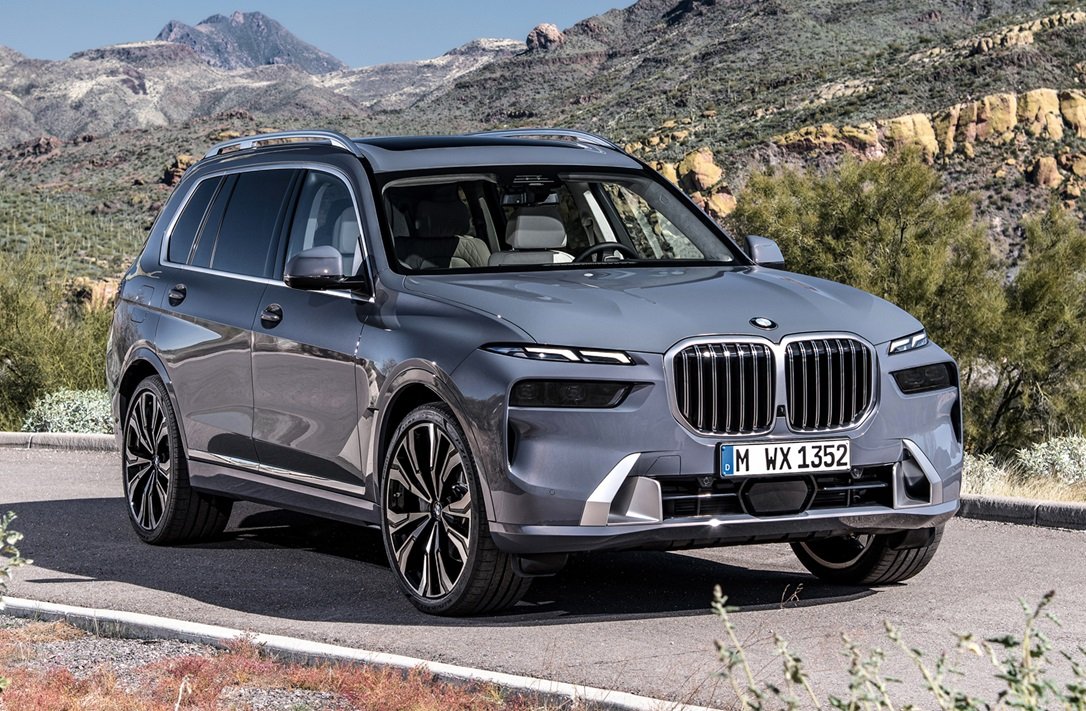

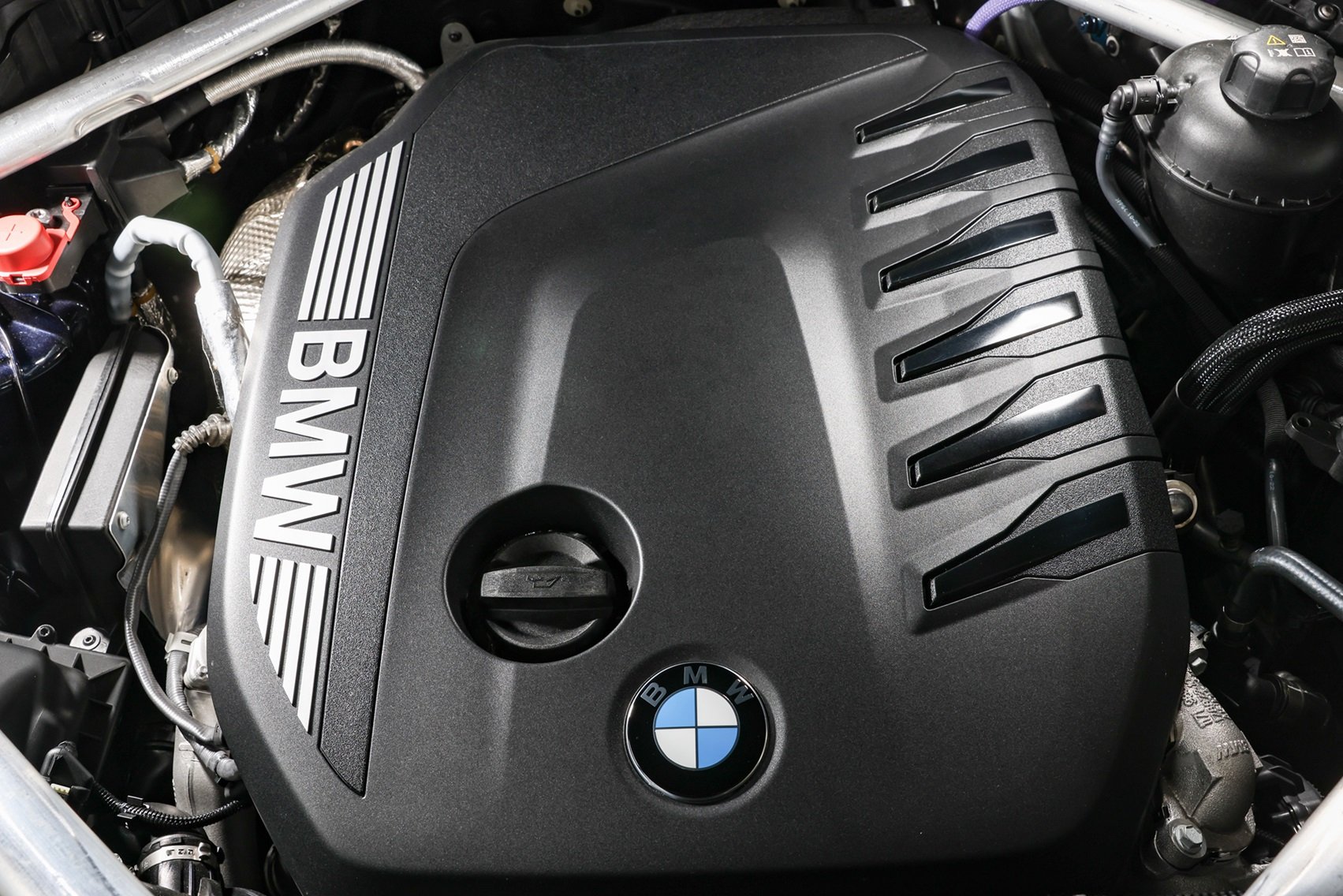
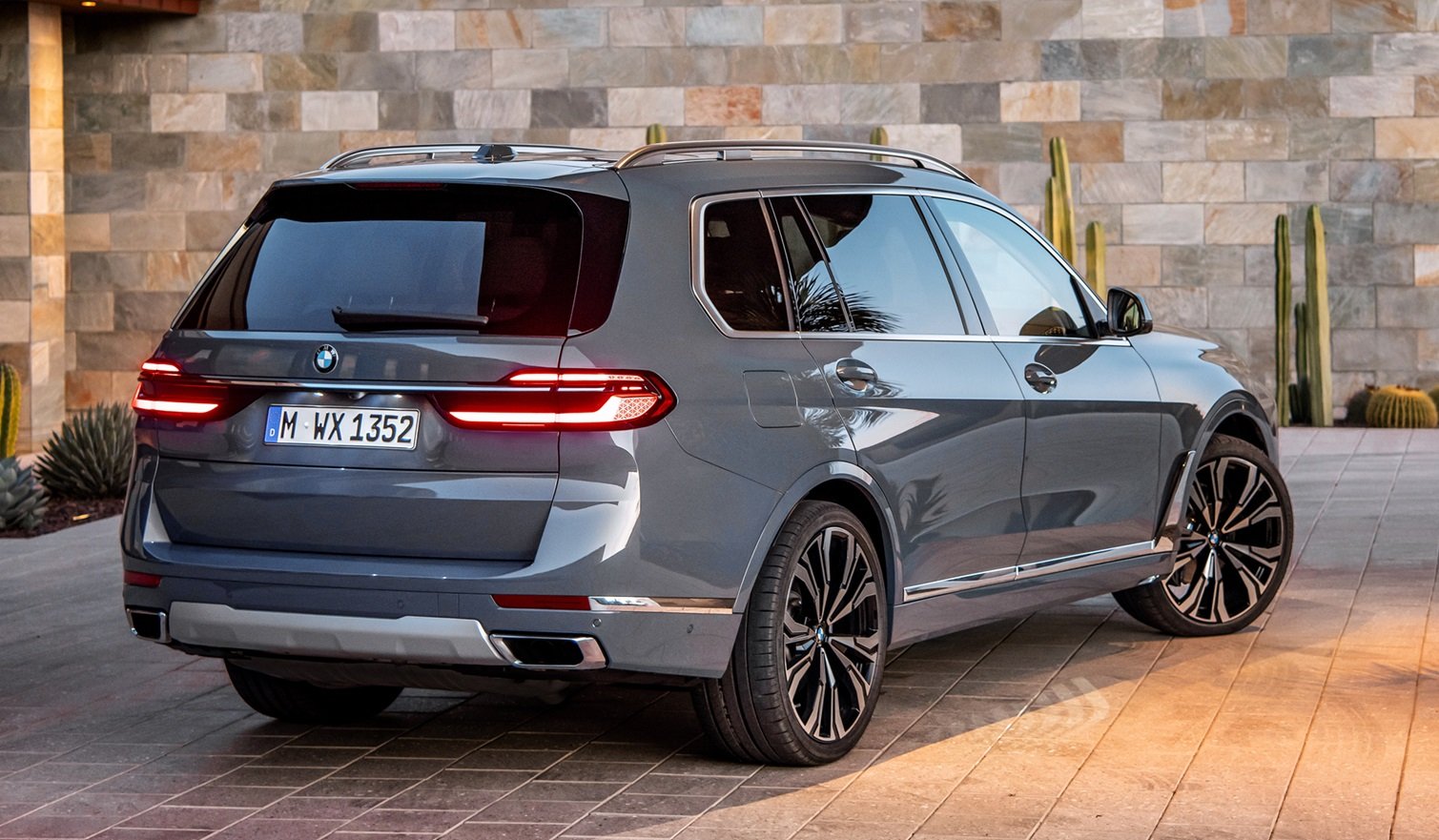
Even though the X7 has a hybrid powertrain like the CX-90, the Beemer’s is in the form of a 12-volt lithium-ion battery, and its focus is not on economy, but on sheer straight-line grunt.
The X7’s 3-litre inline-6 diesel consumes 8 litres per 100km figure for the combined cycle laboratory bench test - that’s as near as makes no difference 50 per cent more fuel than the Mazda.
Sure, the X7 makes an enormous 259kW of peak power from 1750 to 4400 revs. Peak torque comes in at just 1750 RPM and would undeniably demolish the CX-90 with its 106kW per tonne power-weight ratio, despite weighing over 2.4 tonnes. But are you ever going to do that with your kids in row 3?
The X7 40d weighs 7 per cent more than the CX-90 Azami, and shows that the BMW is tuned for performance, meaning it will be a far thirstier vehicle, with a higher compression ratio of 16.5:1 and dashing to 100km/h in just 6 seconds. But how relevant is all that power?
See, BMW has been very successful in using inline-6 engines in their SUVs for decades and you’d stop long before calling their efforts 'lacklustre’. But the X7 sells about 100 units per month (and it’s utterly hideous to look at), the X6 is stupidly impractical because it’s a less-functional X5 with the same powertrain but a stupid boot, and the X5 might be the best-selling premium large SUV in 2023, but it’s a strict 5-seater only.
Whereas the CX-90 covers both bases - it has the 7-seat functionality of the X7, but offers similar performance in the confines of modern traffic, but for roughly half the price of the X7 and about $50,000 less than the X5.
You’re more likely to buy the X7 if you cannot look beyond that brutal performance of a tuxedoed fist-in-the-face, but you’re encouraged to think about the CX-90 for its combination of affordability, smoothness and politeness. The Mazda slices its rivals up with an elegant Katana.
Audi Q7
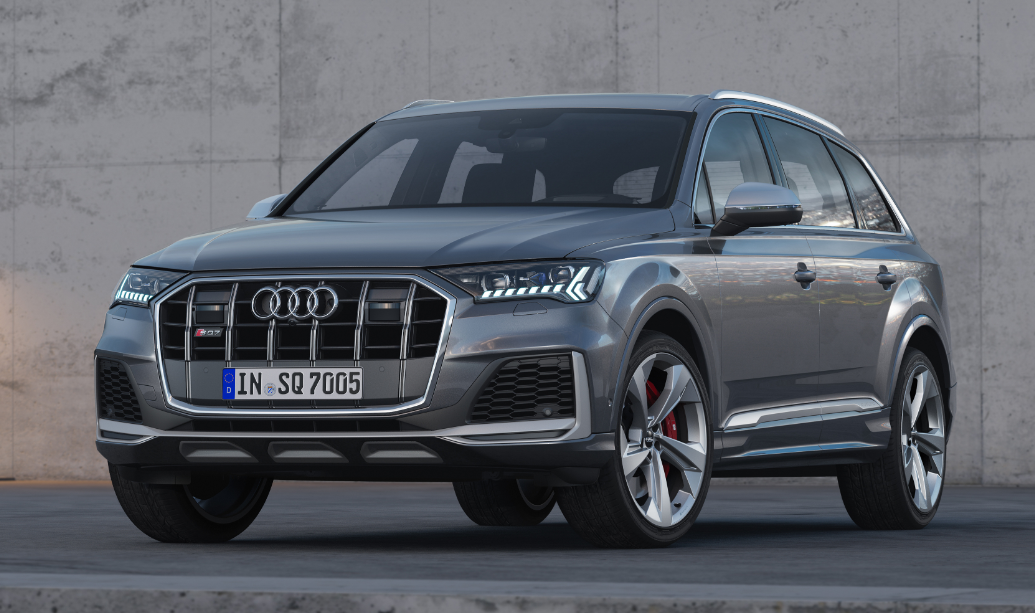
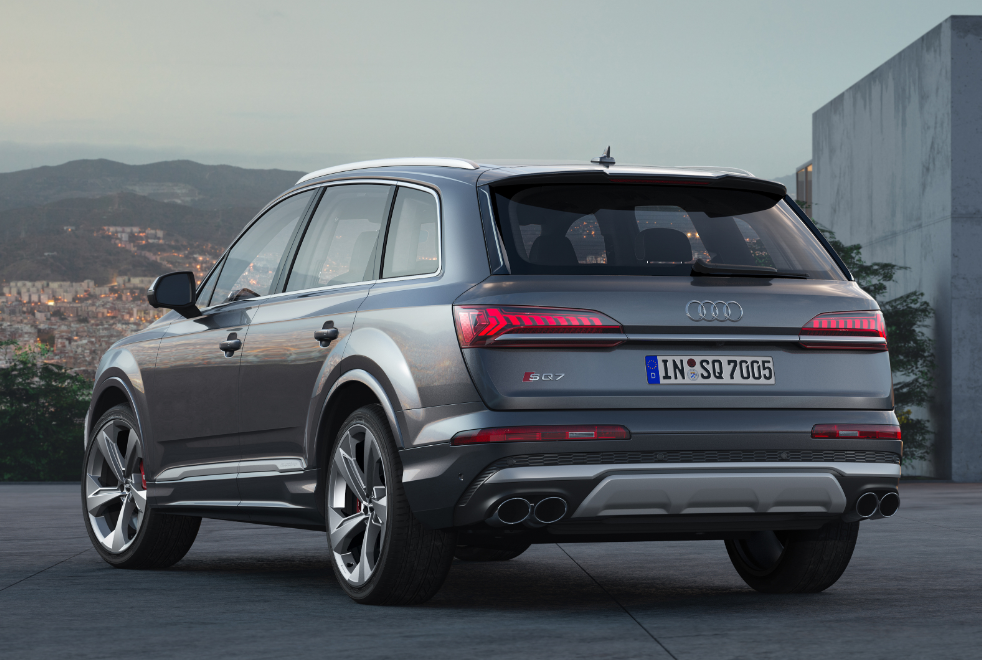
A 55 TFSI variant of a Q7 (that’s the poverty pack) offers you a long list of luxurious features - if you pay for the option packs on top of the $137,500 you’ll be spending before even getting to on-road costs like rego and luxury car tax.
If you want metallic paint, that’s $2300. Four-wheel steering? Sure, you can have that 30-year-old novelty tech pioneered by Honda, for just $2750. If you want a towbar and the wiring, that’ll be $1500 and you’ll have to purchase the towball and the neck/tongue separately. There’s even an ‘extended leather package’ that’ll set you pack another $3300.
Once you’ve ticked all those boxes, you can then contend with having a 3-litre V6 turbocharged petrol engine making 250 kilowatts right up at 5200 revs, while the CX-90 is making 550Nm of torque at just 1500 revs - effectively leaving the Q7 in the mirrors courtesy of that surge of low-RPM grunt.
The Q7 also weighs 119kg more. Do you care about this? Probably not, but it does highlight which vehicle is the most efficient in terms of getting the job done versus weight gained. Do you want to pay for engineering excellence, or flabbiness?
Also, Audi is widely known to be terrible on customer support both at a dealership level and up at head office whereby you’ll burn countless hours in the service department waiting for your six-figure allegedly superior Q7 to be fixed, but not before paying some pathetic grifter’s diagnosis fee for something they’re probably aware is a known defect.
Time is money for customers like you buying these kinds of vehicles, and Audi will almost certainly waste yours if you have a legitimate problem.
LEXUS LX
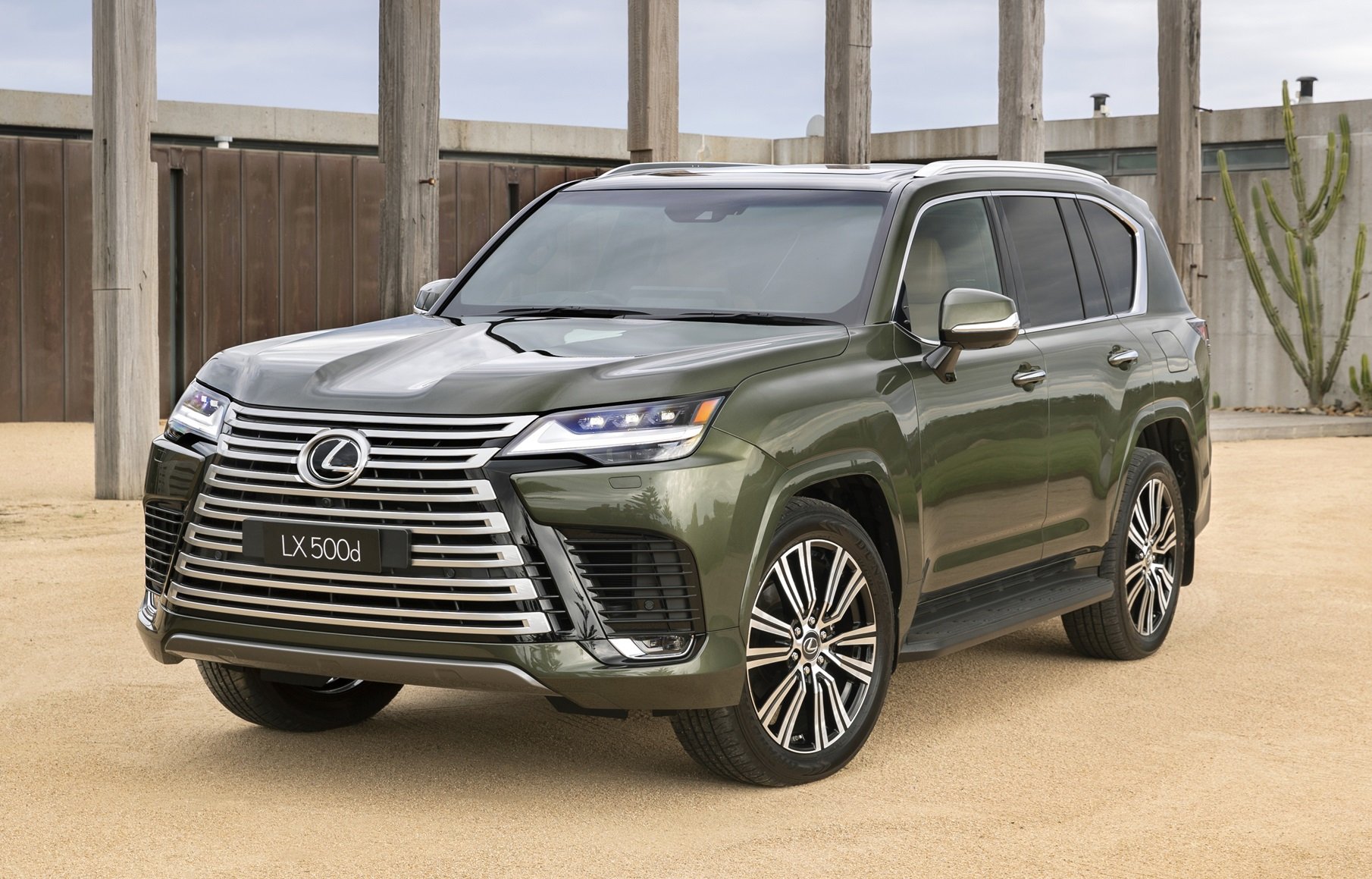
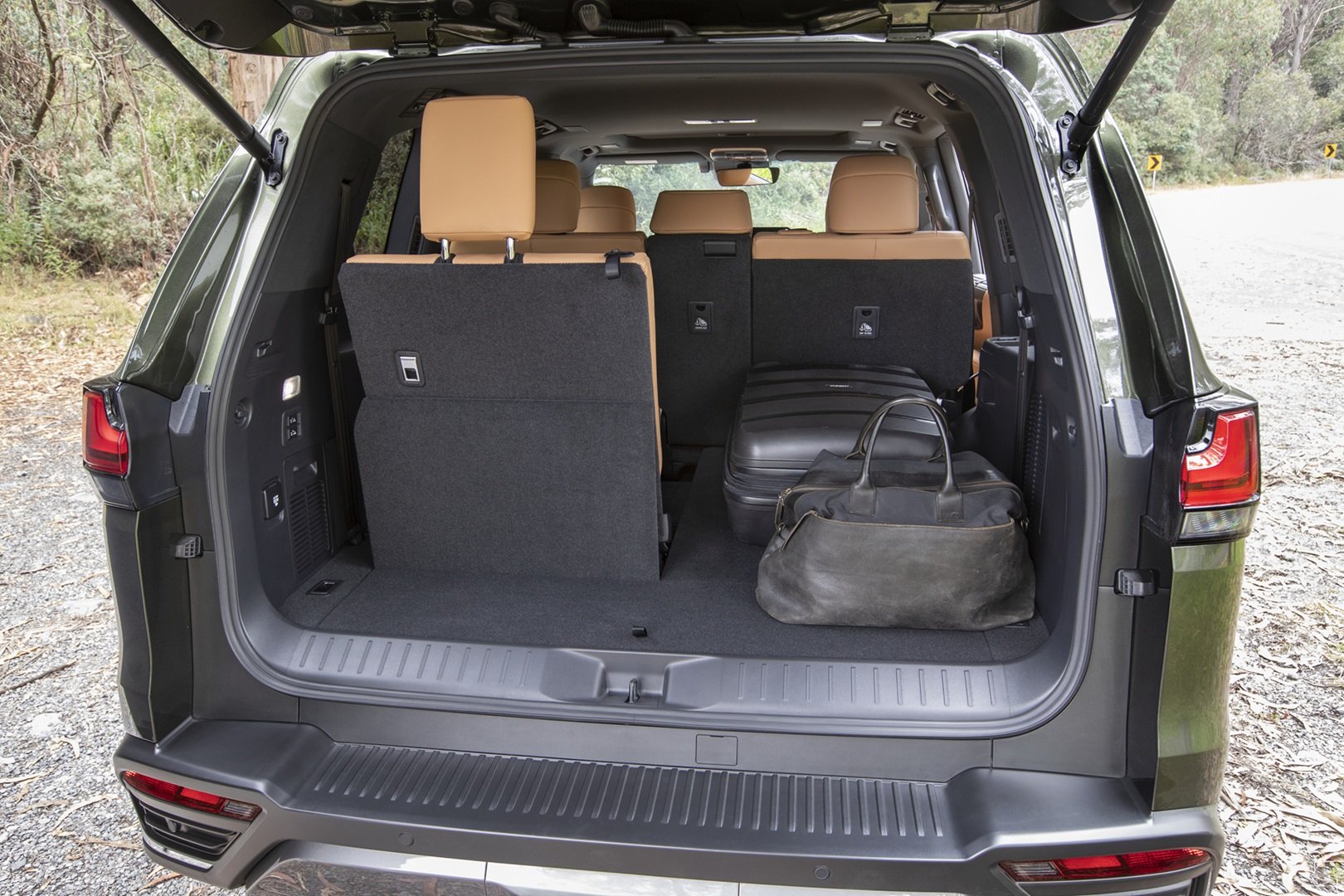
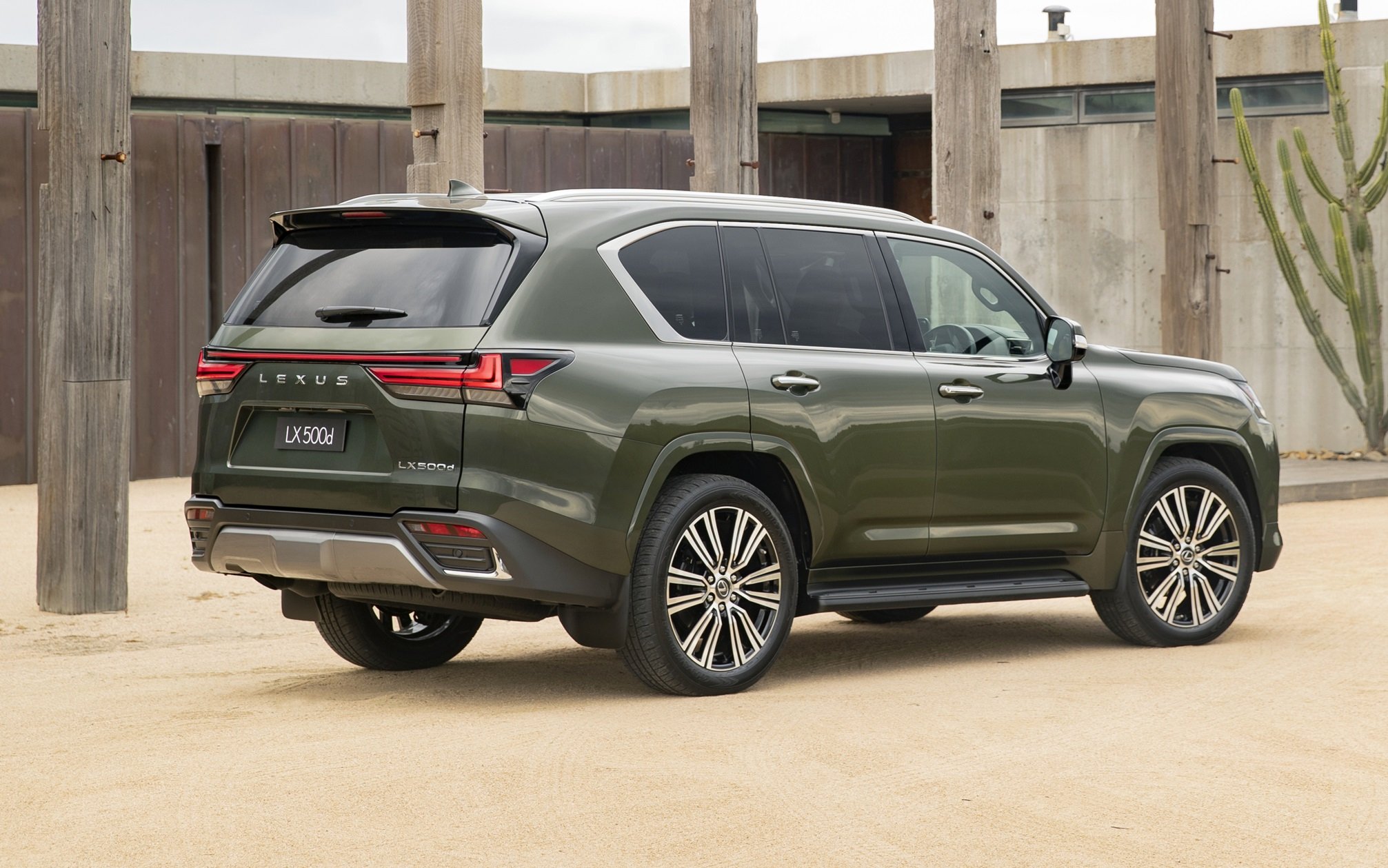
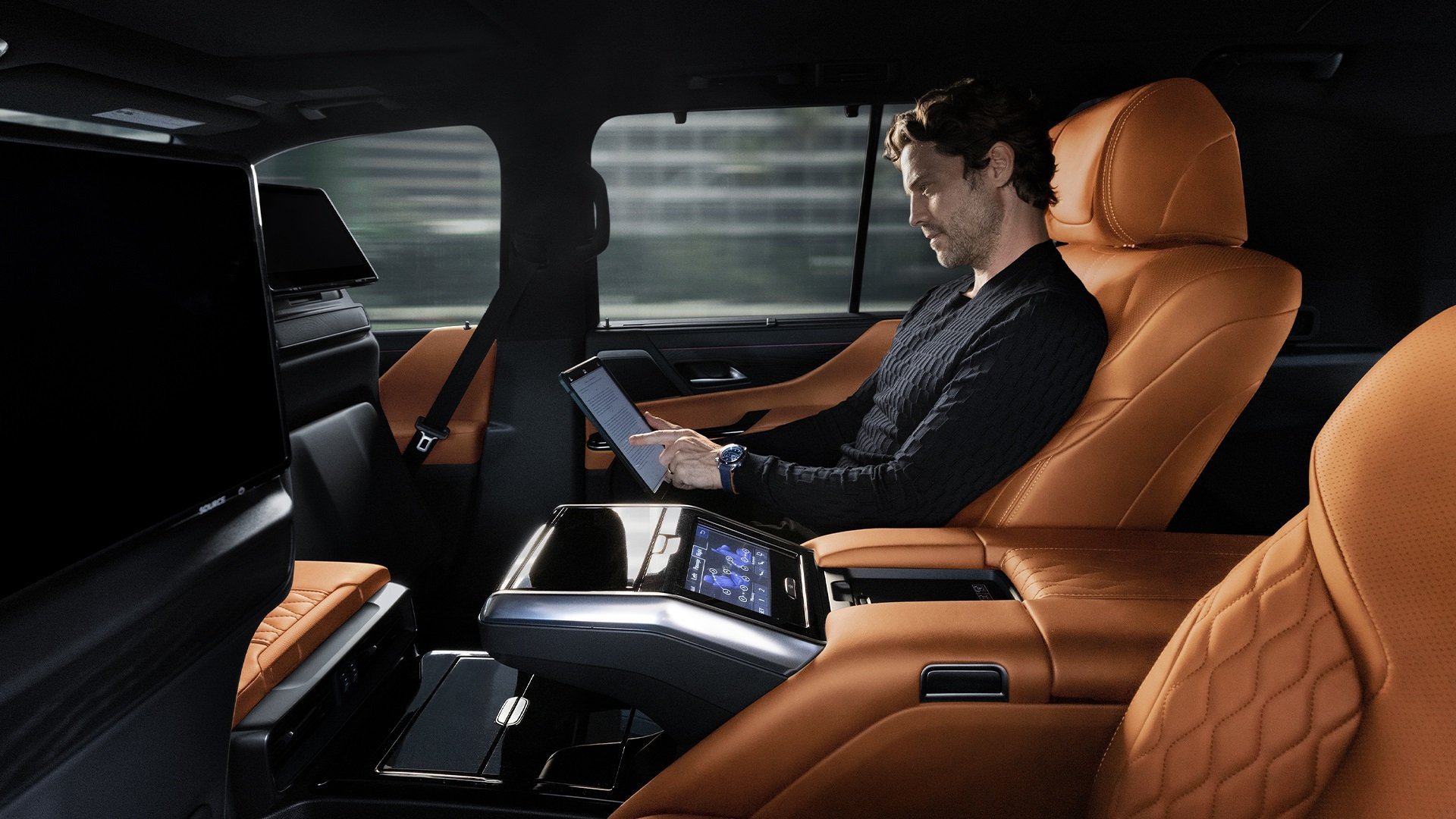
If you look at the diesel version, the LX500d, it comes in three flavours: the standard 500d, the 500d ‘Sport Luxury’ (because: very literal), or the ‘F Sport’ at $180,000 - all before on-road charges. If you’re unaware, ‘F Sport’ is Lexus’s sporty-badged sub-brand; their version of BMW’s ‘M’ or Mercedes’s ‘AMG’).
The garden variety 500d is a $157,000 proposition, before you’ve even bothered with Luxury Car Tax etc. It offers the same 3.3-litre V6 engine from the LandCruiser 300. If you stump up another $20K, the Sport Luxury offers dual 11-inch headrest-inset LCD screens, electric third-row seats, quad-zone climate control, some very fancy LED high-beam headlights and a fully-flexed 25-speaker Mark Levinson premium surround-sound audio system.
According to Redbook pricing data, an LX500d poverty pack is going to see $25,000-$34,000 in registration and stamp duty (state government), Luxury Car Tax (federal government), and that’s not even including GST. But you already know this given you’re shopping in this segment - right?
The 3.3 twin-turbo diesel does make big kilowatts - 220 to be exact, and that is 17 per cent more grunt than the CX-90 diesel. But that gargantuan drivetrain with its low-range transfer gearbox and heavy-duty off-road suspension means this is a 2.7-tonne Snorlax weighing 20 per cent more than a CX-90 Azami - so it’s reduced to just 4kW difference in power-to-weight ratio. 83 to 87. In that hypothetical drag race, the LandCruiser Pimped Edition is going to guzzle 64 per cent more fuel.
And are you really going to take your Lexus LX off-road? Or are you just going to swan around in the city suburbs and occasionally venture out onto the freeway? A Mazda CX-90 looks like impeccable value against this pimped-up LandCruiser.
Mercedes GLS

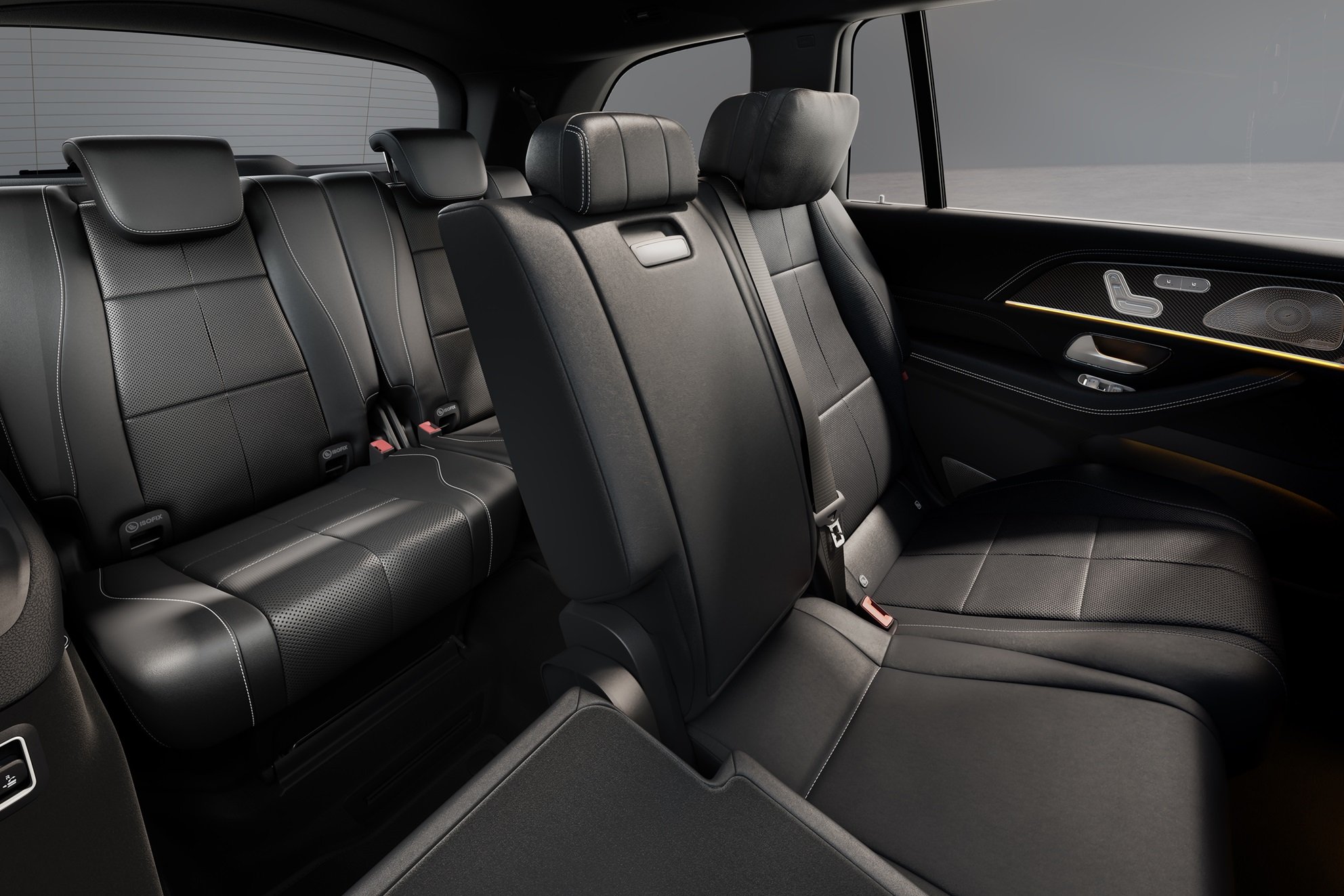
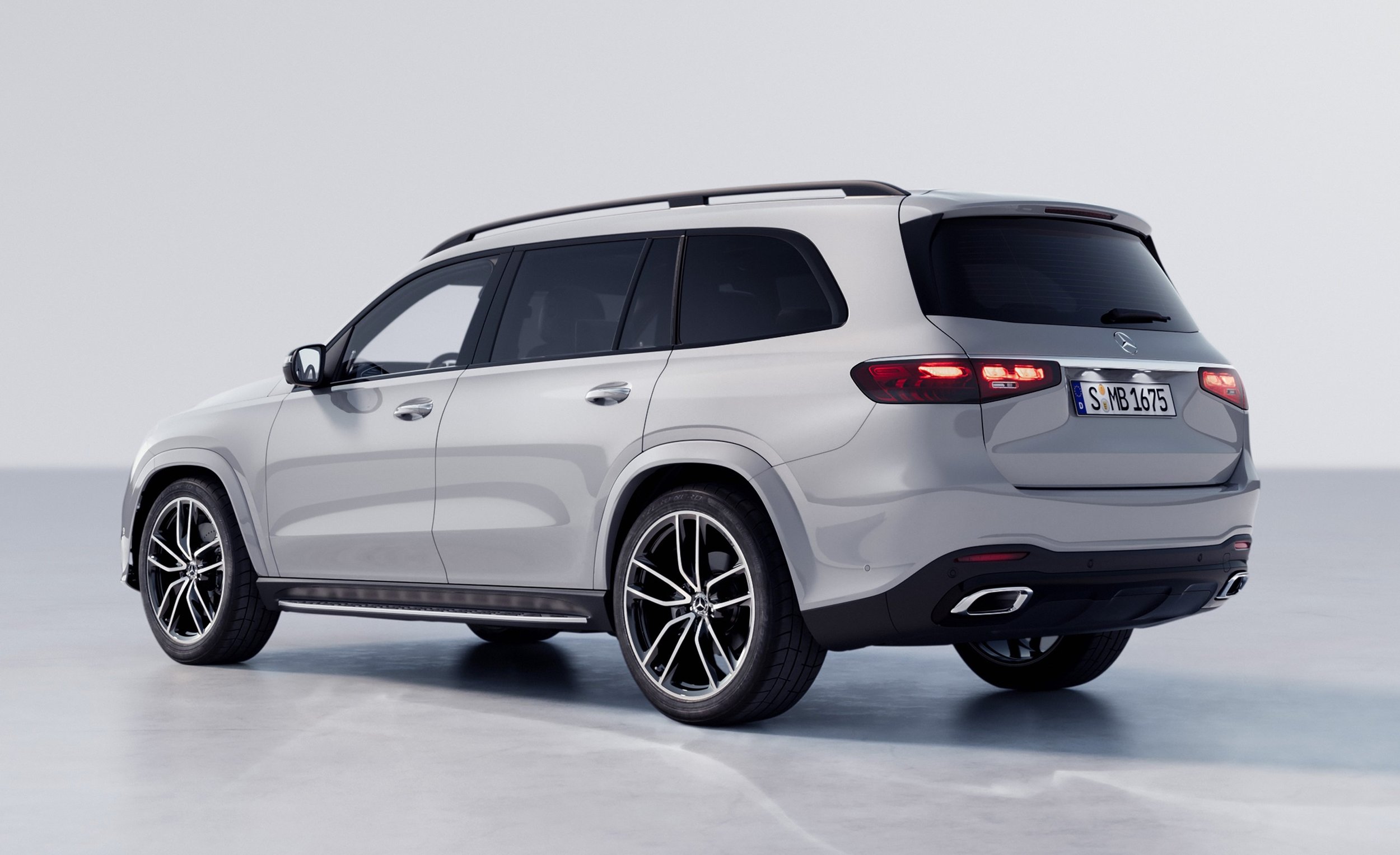
How would you like to spend $200,000 on a 7-seat luxury SUV? Apparently 150-odd people have bought into this idea in the first half of 2024, but let’s get some perspective here. That’s 65 per cent less sales success than the similarly priced BMW X7, and 58 per cent less than the CX-90 - and comparing an Azami to just a poverty-pack Merc GLS, it’s a saving of $90,000. That’s 90-thousand-dollars more, just on the GLS itself.
It has the same number of seats, covered in leather, a kick-arse stereo, a very quiet cabin, electric seats and smartphone connection, wireless phone charging, a grunty diesel engine with all-wheel drive and small-battery energy-recovery hybrid systems. They both get big shiny 20-inch wheels, plenty of thick carpet and glitzy chrome highlights, heated and cooled seats, and 10/10 styling from each brand’s respective design department. So what?
Yes, the GLS has a 270-kilowatt turbo-diesel that offers a 19 per cent better power-to-weight ratio, meaning it will murder the CX-90 at full send. So what? Are you going to drag race en route to the private school drop-off?
Certainly the GLS will have more sound deadening that makes it quieter inside than the CX-90. But the Merc weighs 2.8 tonnes with you on board, so it won’t be as nice to drive on the same mountain road as the CX-90, and the 3.5-tonne towing capacity is fairly meaningless on such a vehicle because nobody is feasibly going to tow such a load with their $200,000 Merc.
But guaranteed the Mazda will be more reliable, meaning less of your precious time wasted. The quantifiable difference between the CX-90 and the GLS is you: How much do you make and how much can you spend in direct proportion to that income?
DRAWBACKS
Towing
To be quite frank, for $80,000-plus, towing capacity on the CX-90 should be better than a much cheaper, more practical Kia Carnival people mover. This is where Mazda is lacking with this vehicle.
They’re happy to claim that a 2500kg maximum braked towing capacity is feasible, but in reality, the 100kg towball download limitation makes CX-90 a joke for moderate towing assignments.
Do not get any ideas about maxxing out the towball download at 100kg (that’s just 5 per cent) with a 2000kg trailer on the back. That’s absurd and dangerous, frankly. And absolutely get the idea out of your head about 2.5 tonnes with just 4 per cent borne by the tow vehicle.
Pig trailers (that’s every box trailer, camper trailer, caravan, boat trailer, tandem or car-type trailer) they are inherently unstable in pitch and yaw. Pitch means seesawing front-to-rear, and yawing means rotating clockwise or anti-clockwise if you were looking down on the trailer from above.
Putting 10 per cent of the trailer’s weight onto the towball is considered standard safe operating procedure for pig trailers. This maintains good overall stability in dynamic driving scenarios whereby the driving vehicle dictates the path of travel to the trailer. Reducing towball download to just 5 per cent means the trailer is twice as likely to become unstable.
Ultimately, the CX-90 does have the kerb weight and the grunt to handle more than 5 per cent on the towball, and certainly to tow 2500kg. The diesel engine and AWD would be ideally matched here. This is a missed opportunity for Mazda.
Presumably, the limiting factor for the CX-90 here must be the rear suspension, which needs to be able to cope with the additional load. Clearly the rear springs and dampers cannot handle the prospect of 250kg (10 per cent) of the trailer’s weight. It could also be an axle load limitation - or all of the above.
Enough with the space-saver!
Nothing screams cost-cutting like a space-saver/temporary spare wheel on a purportedly luxury vehicle. It might be rare that someone gets a flat tyre, and it’s a fair argument that there’s generally a tyre shop reasonably close-by to where most CX-90 owners are going to live and drive.
But in terms of brand perception and how your product looks to the outside world, running on a skinny, undignified donut with dangerously limited grip on wet roads, with a big torquey diesel engine and an all-wheel drive system allegedly keeping your five kids and your dearly beloved on the road - it’s a pretty tightarse look, Mazda.
SAFETY
Right, so we’ve established that the CX-90 has row 3 curtain airbags to level it with both a $55,000 Kia Carnival but also with the $150,000 BMW X7 and Lexus LX. Yay. But what about actual crash tests: how does the CX-90 fare?
Happily, the Insruance Institute for Highway Safety (IIHS) has actually done some testing, unlike EuroNCAP (and thereby ANCAP because they’ll copy & paste the results for an Australian/NZ rating).
The IIHS tested the CX-90 in 2024 and its crash data applies to the rating they also gave for the CX-70. CX-90 was so good the IIHS gave it a 2024 Top Safety Pick+ award - against the latest and strictest set of protocols.
Here’s how CX-90 performs in the ‘small overlap’ test, where 25 per cent of the vehicle’s frontal area hits an immovable object at 64km/h - an extremely severe test with high impact loads resolved through a very concentrated area of the vehicle:
What’s critical in this test is that the passenger footwell is well maintained and that the airbags sufficiently prevent occupant heads from colliding with the hard structures of the vehicle, and that rear passengers’ heads, beck and torso are sufficiently restrained and controlled to both avoid whiplash injury but also contact with the front seat.
According to the IIHS report:
frontal and side curtain airbags worked well together to keep the head from coming close to any stiff structure or outside objects
and down below, the:
driver's space was maintained well, and risk of injuries to the dummy's legs and feet was low
These accolades extended to the same crash performed on the CX-90’s opposite side (the non-driver’s side, based on US market spec). For both sides of the vehicle, CX-90 gets a full list of green ‘good’ marks for all dummy load measurements.
In the ‘moderate overlap’ test (also known as the ‘frontal offset’ test in ANCAP language), with a 40 per cent overlap instead of 25 per cent, CX-90 also performed superbly when hitting the immovable barrier at 64km/h.
What the IIHS engineers wanted to see in this test was not just how well CX-90 protected the driver, but also how well the rear seatbelt - the protocols for which have been made stricter from February 2024 - performed well enough to avoid chest injuries as a result of ribcage deflection.
The IIHS reports:
Rear passenger dummy injury values indicate a low risk of injury to the head or neck and chest.
The reason this was achieved was because:
During the crash, the shoulder belt remained in an ideal position on the dummy’s chest.
As for the lap portion of the seatbelt which, in some vehicles, can over-tension and causes abdominal injuries to the occupant, it was reportedly very good at striking that balance:
rear passenger dummy's lap belt remained in the ideal position on the pelvis.
The third benefit of CX-90’s rear seatbelt choreography going off so superbly was:
The rear passenger dummy's head remained a safe distance from the front seatback.
As for the auto emergency braking system and its response to various scenarios, the CX-90 earned good scores in the night tests in both the ‘crossing adult’ and ‘parallel adult’ pedestrian tests.
It still hit the parallel adult pedestrian using high beams in the 60km/h test, but managed to wipe off all but 6km/h - barely walking pace. Travelling at 33 metres per second, the system wiped off 54km/h from a 2.2-tonne vehicle. That’s seriously impressive stuff, helped by its massive 347/350mm front/rear brake rotors.
In the daytime 40km/h test detecting and braking for a child pedestrian, the CX-90 managed to only hit doing 37km/h. Unfortunately, this is where the CX-90’s system deserves valid criticism. Hitting a child at 37km/h is enough to kill them and while yes - the driver is responsible for controlling the vehicle - in terms of prioritising how these modern crash prevention systems are being forced on consumers, the fact this $80,000 vehicle doesn’t pass that test in broad daylight is a concern.
Because the same vehicle passes the same test as the same speed but at night for an adult pedestrian, using only the low beams. In terms of the likelihood of these scenarios playing out in the real world, a kid running in front of a CX-90 during the same at 40km/h in a school zone is far more likely than an adult at night at the same speed.
The cause of this delay in stopping quickly enough is likely due to the local position of the camera and radar systems, and their ability for detection of a much smaller object. It might be connected to the CX-90’s tall, elongated bonnet where the radar is housed in the Mazda logo at the front, and well-over 1 metre away up in the top of the windscreen, is the stereoscopic camera waiting to corroborate the data being picked up by the radar.
Overall, the CX-90 gets very high scores in all areas of testing and you should absolutely consider it one of the safest vehicles you can buy on the market today. It’s just not perfect because: nothing is.
CONCLUSION
The CX-90 isn’t a perfect execution, but it’s a very good first attempt at de-throning the German prestige brands. Mazda has certainly left a metaphorical flesh wound that will have a felt impact in the boardrooms and the product planning departments.
Certainly, if the likes of BMW and Lexus want to remain relevant (as much as luxury brands can claim to be relevant charging over $100,000 for what mainstream brands already offer in their highest model grades), they will be watching closely as the CX-90, the CX-80 and the CX-60 continue to chip away at their sales.
The CX-90 is a very compelling luxury 7-seat large SUV if you have about $80,000 to spend. But the problem Mazda has is trying to justify that extra step above what it already offers elsewhere in its model line-up. Because a CX-9, to most people, is going to feel, smell and drive just as well on the same mundane roads, performing the same routine driving tasks for modern families.
The only differentiation is you, and how much you’re willing to spend.
























Toyota has raised the Corolla and called it a small SUV, one that offers reliability, practicality and even performance atop the range. Let’s see if there are any redeeming features that can justify the $50K price?